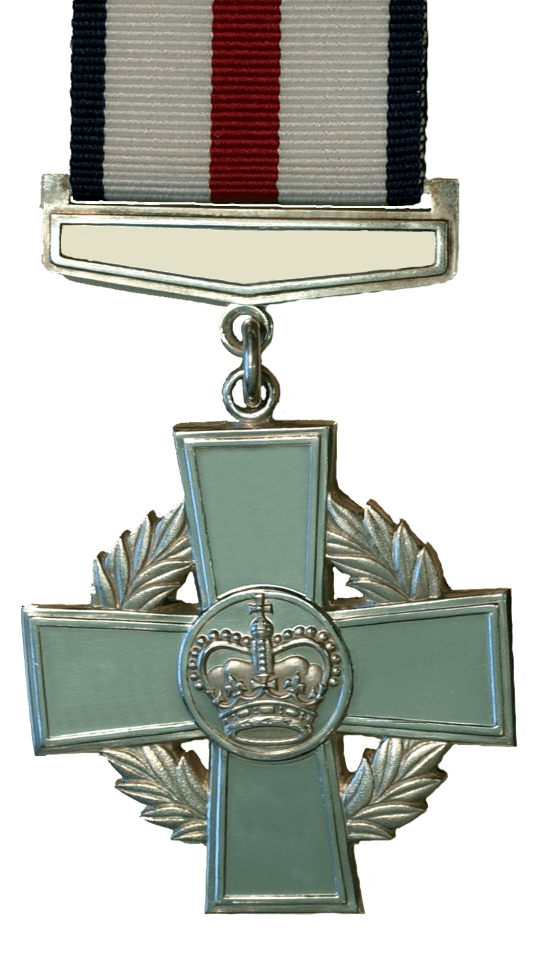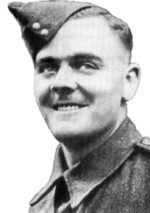VC and CGC Recipients
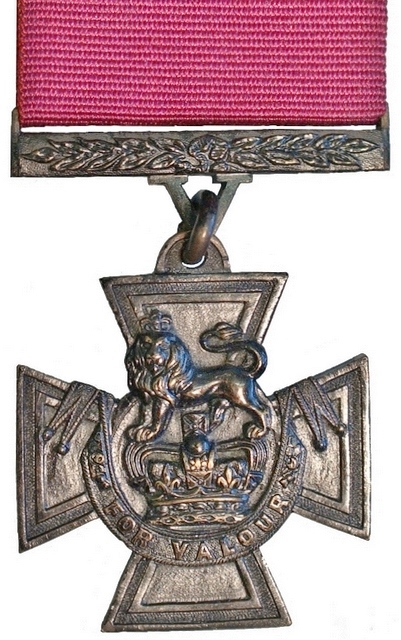 The Victoria Cross was instituted by Royal Warrant of Queen Victoria on 29th of June 1856. It is awarded to “those officers or men who served us in the presence of the enemy and that shall have performed some single act of valour or devotion to the country.”
The Victoria Cross was instituted by Royal Warrant of Queen Victoria on 29th of June 1856. It is awarded to “those officers or men who served us in the presence of the enemy and that shall have performed some single act of valour or devotion to the country.”
The idea originated with the Prince Consort, who is said to have designed the medal. The cross carries with it an annuity, then of £10 and now of £1,300. In 1902 King Edward VII sanctioned the cross to be given to the representative of soldiers who would have been entitled to it had they survived.
The decoration consists of a bronze Maltese Cross, which, until 1942, was made from the metal of Russian guns captured at Sebastopol, in the Crimean War. It is worn with a red ribbon by recipients in the army and with a blue ribbon for recipients in the Navy.
A total of nine serving members of the Regiment were awarded the Victoria Cross.
The Conspicuous Gallantry Cross was Instituted in 1993 as part of the review of gallantry awards. It replaced Three previous awards: the Distinguished Service Order for gallantry (issued to officers), the Distinguished Conduct Medal (Army other ranks) and the Conspicuous Gallantry Medal (Royal Navy other ranks).
The decoration consists of a cross pattée in silver, mounted on a wreath of laurel leaves. The obverse of the medal bears in the centre a circular medallion depicting St. Edward’s crown. The reverse is plain in design and bears the rank, name and unit of the recipient and the date of the award. The ribbon is white with narrow stripes of dark blue at each edge and a central stripe of crimson.
Abyssinia Campaign, 1867/68
3691 – Drummer Michael MAGNER and 949 – Private James BERGIN – 33rd Regiment
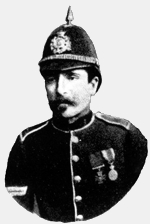
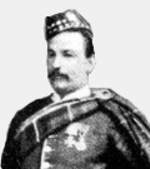 For their conspicuous gallantry, in the assault of Magdala, on the 13th of April, 1869.
For their conspicuous gallantry, in the assault of Magdala, on the 13th of April, 1869.
Lieutenant General Lord Napier reports that while the head of the column of attack was checked by the obstacles at the gate, a small stream of officers and men of the 33rd Regiment and an officer of engineers, breaking away from the approach to Magdala, and climbing up a cliff, reached the defences and forced their way over the wall and through the strong and thorny fence, thus turning the defenders of the gateway.
The first two men to enter Magdala were Drummer Magner and Private Bergin of the 33rd Regiment.
(London Gazette, 28th of July, 1868)
The Boer War 1900 – 1902
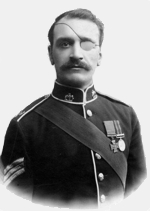 2522 Sergeant James FIRTH, 1st Battalion, The Duke of Wellington’s (West Riding Regiment)
2522 Sergeant James FIRTH, 1st Battalion, The Duke of Wellington’s (West Riding Regiment)
During the action at Plewton’s Farm, near Arundel, Cape Colony, on the 24th of February, 1900.
Lance Corporal Blackman having been wounded and lying exposed to a hot fire at a range of 400 – 500 yards, Sergeant Firth picked him up and carried him to cover.
Later in the day, when the enemy had advanced to within a short distance of the firing line, Second Lieutenant Wilson being dangerously wounded and in a most exposed positioned, Sergeant Firth carried him over the ridge, which was being held by the troops, to shelter and was himself shot through the nose and eye whilst doing so.
(London Gazette, 11th of June, 1901)
Medals Awarded: Victoria Cross, Queen’s South Africa Medal ( 1899-1902 ) with “Cape Colony” clasp
The First World War, 1914 – 1918
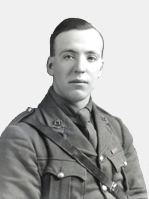 2nd Lieutenant Henry KELLY, 10th Battalion, The Duke of Wellington’s (West Riding Regiment)
2nd Lieutenant Henry KELLY, 10th Battalion, The Duke of Wellington’s (West Riding Regiment)
For most conspicuous bravery in attack at Le Sars on 4th of October, 1916.
He twice rallied his company under the heaviest fire and finally led the only three available men into the enemy trench and there remained bombing until two of them had become casualties and enemy reinforcements had arrived.
He then carried his Company Sergeant Major, who had been wounded, back to our trenches, a distance of 70 yards, and subsequently three other soldiers.
He set a fine example of gallantry and endurance.
(London Gazette, 25th of November, 1916)
Other Military awards include the Military Cross and Bar.
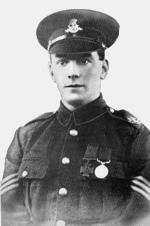
15805 Private Arnold LOOSEMORE 8th Battalion, The Duke of Wellington’s (West Riding Regiment)
For most conspicuous bravery and initiative during the attack on a strongly held enemy position south of Langemarck, Flanders on 11th August, 1917.
His platoon having been checked by heavy machine-gun fire, he crawled through partially-cut wire, dragging his Lewis gun with him, and single handed dealt with a strong part of the enemy killing about twenty of them and thus covering the consolidation of the position taken up by his platoon, immediately afterwards his Lewis gun was blown up by a bomb and three of the enemy rushed for him, but he shot them all with his revolver.
Later, he shot several enemy snipers, exposing himself to heavy fire each time. On returning to the original post he also brought back a wounded comrade under heavy fire at the risk of his life. He displayed throughout an utter disregard of danger.
(London Gazette, 14th of September 1917)
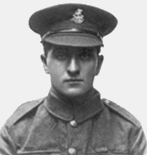
24066 Private Arthur POULTER 1/4th Battalion, The Duke of Wellington’s (West Riding Regiment) (TF)
For most conspicuous bravery when acting as a stretcher-bearer, at Erquinghem-Lys, on the 10th of April, 1918.
On ten occasions Private Poulter carried badly wounded men on his back to a safe locality, through a particularly heavy artillery and machine-gun barrage. Again, after a withdrawal over the river had been ordered. Private Poulter returned in full view of the enemy, who were advancing, and carried back another man who had been left behind wounded. He bandaged-up over forty men under fire, and his conduct throughout the whole day was a magnificent example to all ranks. This very gallant soldier was seriously wounded when attempting another rescue in the face of the enemy.
(London Gazette, 28th of June, 1918)
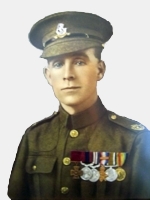
34506 Private Henry TANDEY, VC, DCM, MM 5th Battalion. The Duke of Wellington’s (West Riding Regiment) (TF)
For most conspicuous bravery and initiative during the capture of the village and the crossings at Marcoing and the subsequent counter-attack on 28th of September, 1918.
When, during the advance on Marcoing, his platoon was held my machine-gun fire, he at once crawled forward, located the machine-gun, and with his Lewis gun team knocked it out. On arrival at the crossing he restored the plank bridge under a hail of bullets, thus enabling the first crossing to be made at this vital spot.
Later in the evening, during an attack, he, with eight comrades, was surrounded by an overwhelming number of Germans and, though the position was apparently helpless, he led a bayonet charge through them, fighting so fiercely that 37 of the enemy were driven into the hands of the remainder of his company. Although twice wounded he refused to leave until the fight was won.
(London Gazette, 14th of December, 1918)
WW1 Medals awarded: Victoria Cross, Distinguished Conduct Medal, Military Medal, 1914 1915 Star, War Medal, Victory Medal with MiD Oak Leaf
NB: Tandey donated his medals to the Duke of Wellington’s Regimental Museum. On special occasions and parades he would sign them out to wear. During the last period that he had signed them out, he died. Unaware that the medals should have been returned to the museum, the medals were auctioned, by his wife, at Sotheby’s, in London and purchased by a private collector, for £27,000. They were later presented to the Regimental Museum of The Green Howards (the regiment in which he had earlier served), by Sir Ernest Harrison OBE, at a ceremony held in the Tower of London on 11 November, 1997.
During WWII, Whilst a Local Air Raid Warden, Tandey gave a fake story to a naive young news reporter, about saving Hitlers life in WWI. It whiled away some time and got him some free beers. The story, after being published, became an urban myth that many people fell for. However at the time it was supposed to have happened, Hitlers unit, the 16th Bavarian Reserve Infantry Regiment was stationed in the Wyschaete area, whilst Tandey’s unit, 5th Battalion DWR, was deployed approximately 50 miles North of Marcoing. The German Bundesarchive, in a letter to Lt Col N D McIntosh (Green Howards) established that Hitler was not even with his unit at that time, but had home leave from 10th to 27th September 1918.
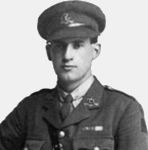
2nd Lieutenant James Palmer HUFFAM, 5th Battalion The Duke of Wellington’s (West Riding Regiment) (TF)
For conspicuous bravery and devotion to duty on 31st of August, 1918.
With three men he rushed an enemy machine-gun post and put it out of action. His post was then heavily attacked and he withdrew fighting, carrying a wounded comrade.
Again on the night of the 31st of August, 1918, at St Servin’s Farm, accompanied by two men only, he rushed an enemy machine-gun post, capturing eight prisoners and enabling the advance to continue.
Throughout the whole of the fighting from 29th of August to 1st September 1918 he showed the utmost gallantry
(London Gazette, 26th of December, 1918)
The Second World War, 1939 – 1945
 5891907 Private Richard BURTON, 1st Battalion, The Duke of Wellington’s Regiment (West Riding)
5891907 Private Richard BURTON, 1st Battalion, The Duke of Wellington’s Regiment (West Riding)
In Italy on 8th of October, 1944, two companies of the Duke of Wellington’s Regiment moved forward to take a strongly held feature 760 metres high. The capture of this feature was vital at this stage of the operation, as it dominated all the ground on the main axis of advance. The assaulting troops made good progress to within twenty yards of the crest, when they came under withering fire from Spandaus on the crest. Private Burton rushed forward and engaging the first Spandau’s position with his Tommy-gun, killed the crew of three.
When the assault was again held up by murderous fire from more machine guns, Private Burton, again showing complete disregard for his own safety, dashed forward toward the first machine-gun, using his Tommy-gun until his ammunition was exhausted. He then picked up a Bren gun and, firing from the hip, succeeded in killing or wounding the crews of the two machine-guns. Thanks to his outstanding courage the Company was then able to consolidate on the forward slope of the feature. Private Burton’s magnificent gallantry and total disregard of his own safety during many hours of fierce fighting in mud and continuous rain were an inspiration to all his comrades.
(London Gazette, 4th of January, 1945)
4624899 Corporal (Acting Serjeant) Hanson Victor TURNER
Acting-Serjeant Hanson Victor Turner, serving with ‘Dukes’, since his enlistment in 1940, was transferred to The West Yorkshire Regiment (The Prince of Wales’s Own), in 1943, as an acting serjeant, two months before the actions leading to the award of his VC.
When his medal was put up for sale it was purchased by the Halifax Town Council, as he was a resident of Halifax. The medal is displayed in the Duke of Wellington’s Museum for ease of access.
The citation in the London Gazette of the 15<sup>th</sup> August, 1944, gives the following details:–
In Burma, at Ningthoukong on the night of 6th-7th June, 1944, an attack was made by Japanese with medium and light machine guns. The attack largely fell on the position held by a platoon of which Serjeant Turner was one of the Section Commanders. The enemy were able to use grenades with deadly effect. Three machine-guns in the platoon were destroyed and the platoon was forced to give ground. Serjeant Turner with coolness and fine leadership reorganised his party and with a doggedness and spirit of endurance of the highest order repelled all attacks. The position was held throughout the night. When it was clear that the Japanese were attempting to outflank the position, Serjeant Turner, armed with grenades, boldly and fearlessly attacked them single handed. He went back five times for more grenades; and on the sixth occasion, still singlehanded, he was killed while throwing a grenade among the enemy. His conduct on that night will ever be remembered by the Regiment. His superb leadership and undaunted will to win in the early stages of the attack was undoubtedly instrumental in preventing the enemy plan from succeeding. The number of enemy found dead the next morning was ample evidence of the effect his grenade throwing had had. He displayed outstanding valour and had not the slightest thought of his own safety. He died on the battlefield in a spirit of supreme self-sacrifice.
NB: Although the citation states Burma, Ningthoukong (Ningthoukhong) is south of Imphal, in the Indian state of Manipur.
Hanson is buried in the Imphal War Cemetery, Plot 6. Row B. Grave 7. Upon his grave marker are inscribed the words, ‘Well done, good and faithful servant, ever remembered’.
Also see:- Calderdale Museum article on Cpl Turner.
(London Gazette, 17th of August, 1944)
Bosnia 1994
Corporal Wayne Mills, 1stBattalion, The Duke of Wellington’s Regiment (West Riding)
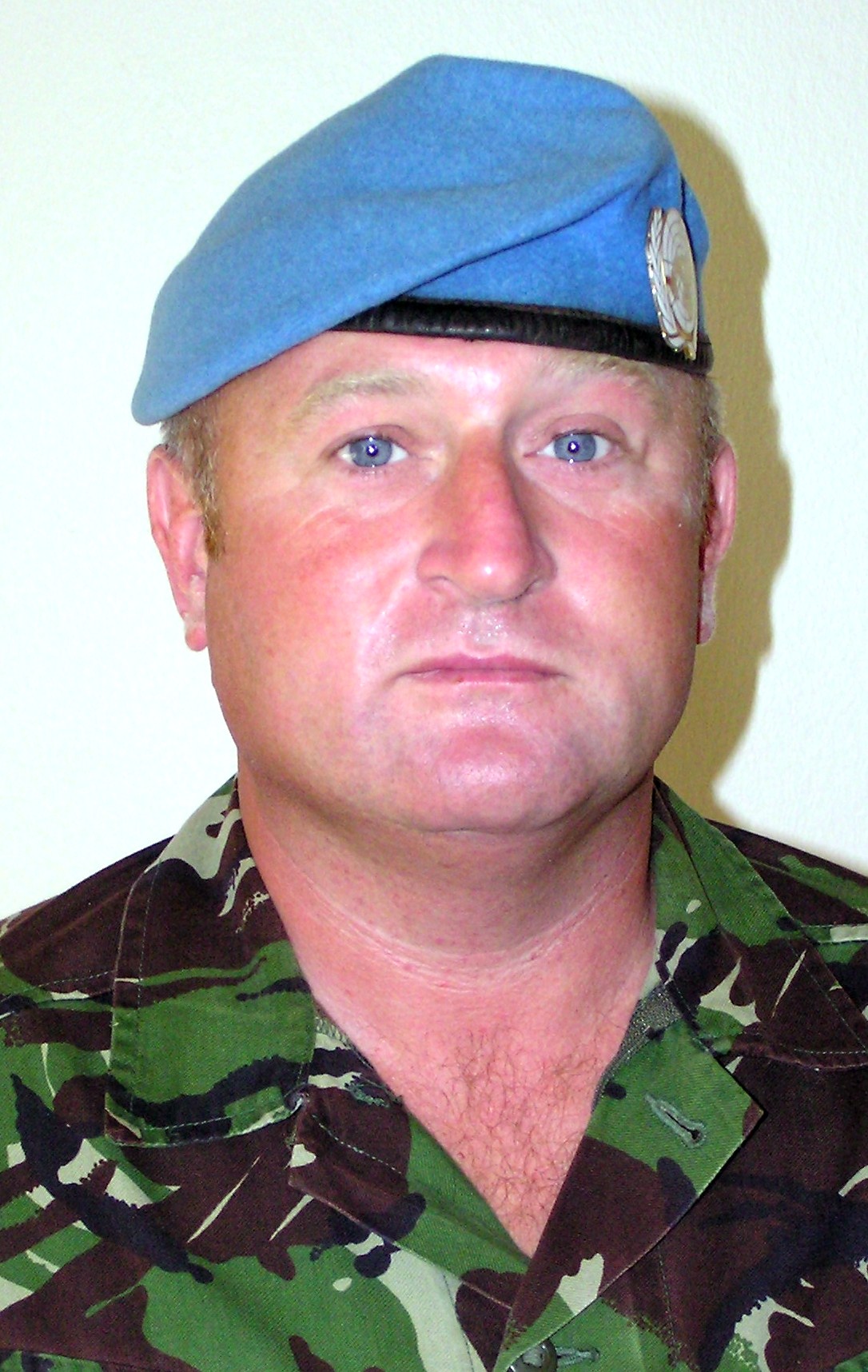
Corporal Wayne Mills of the 1st Battalion became the first recipient of the Conspicuous Gallantry Cross, which is second only to the Victoria Cross.
On (29 April 1994), a patrol led by Corporal Mills came under heavy small-arms fire from a group of Bosnian-Serbs. The patrol returned fire, killing two of the attackers. The patrol then withdrew, but the attackers persisted in firing on the patrol. The patrol soon reached an open clearing, where it was obvious they would be highly vulnerable to fire from the attackers. Corporal Mills then performed an astonishing feat of bravery. He turned back and engaged the group in a fire-fight, delaying the attackers long enough to allow the rest of his patrol to cross the clearing. While doing this brave act, Corporal Mills shot the leader of the group, with the rest scattering into the woods.
